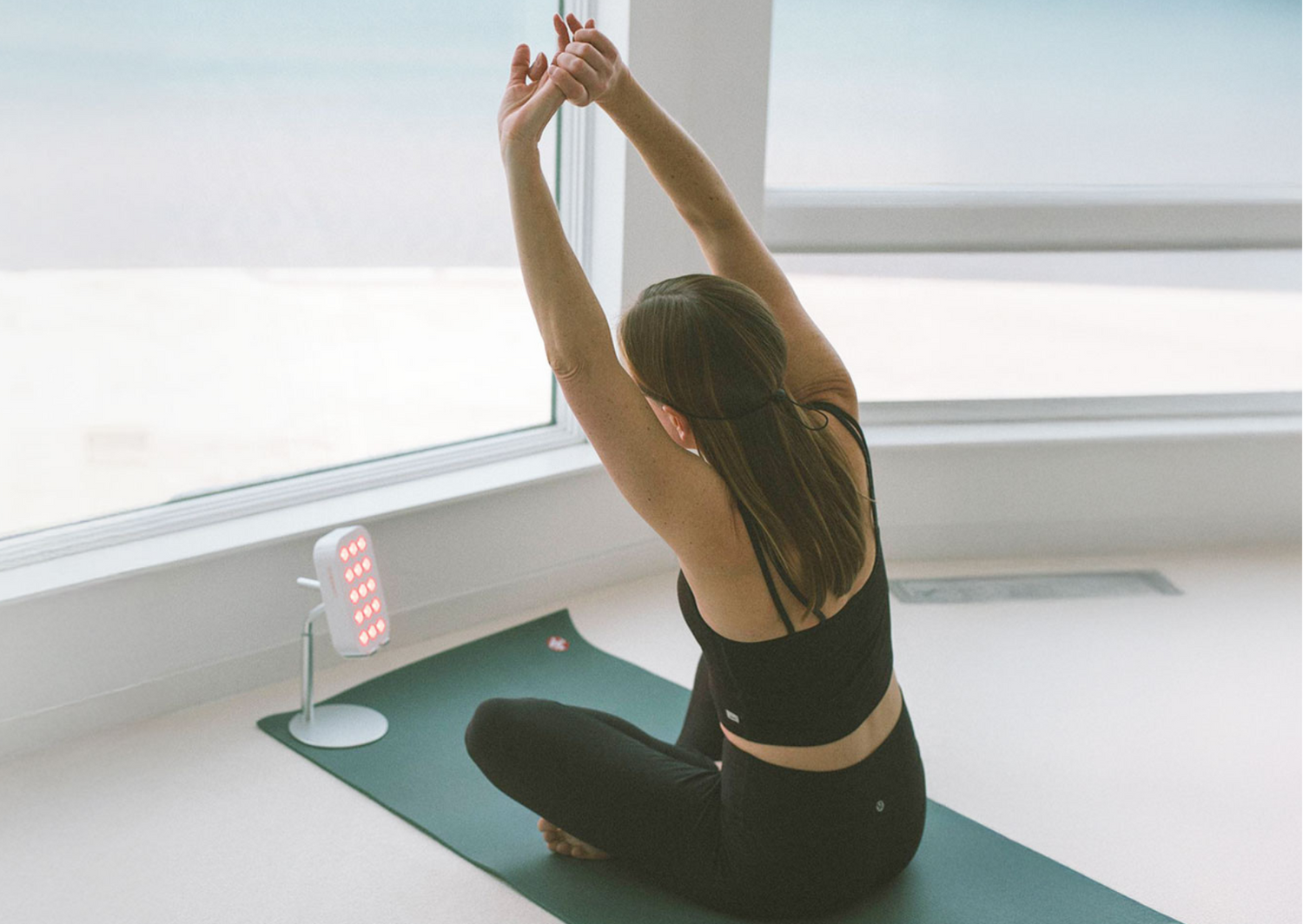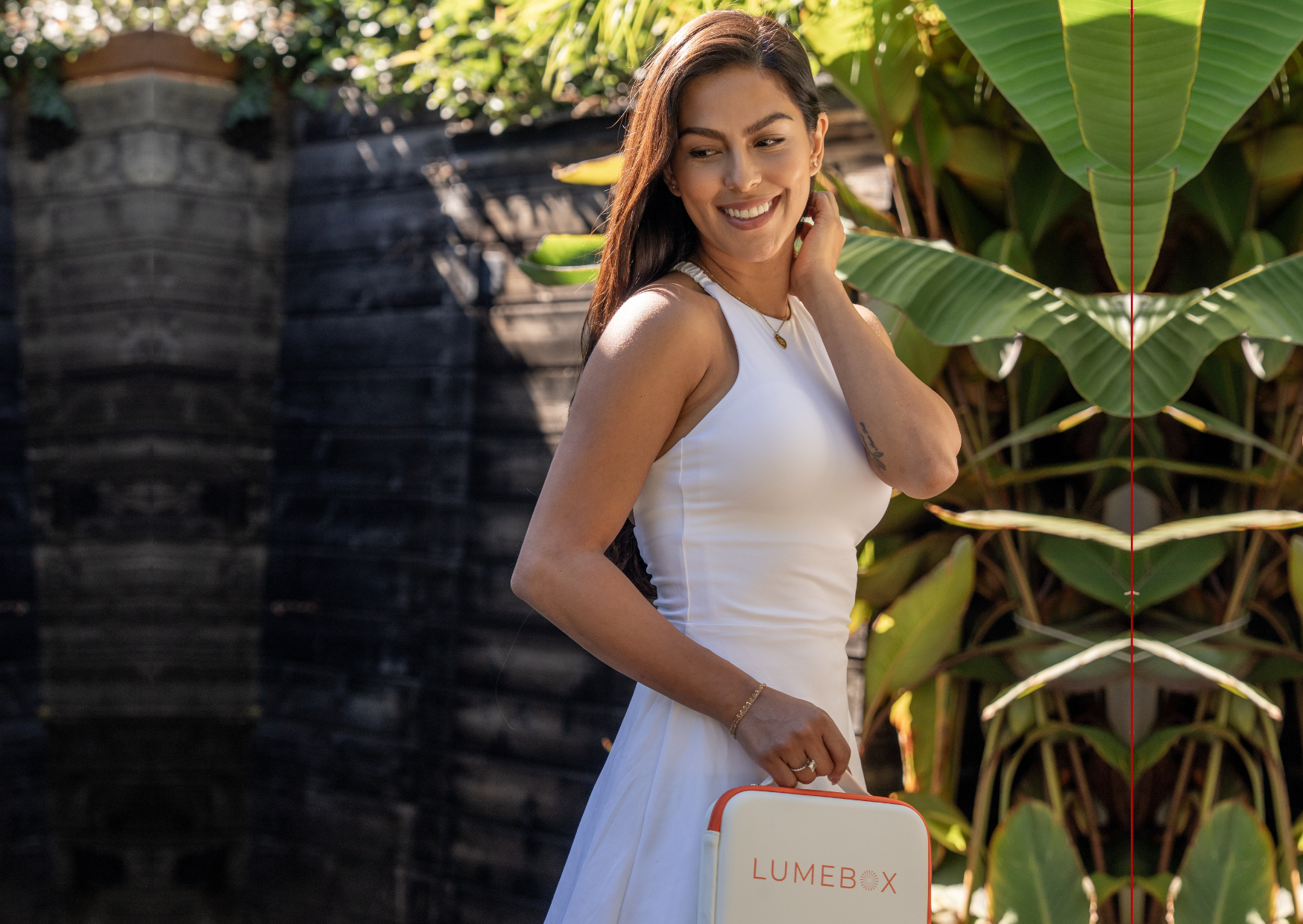How Long And Often Should I Use Red Light Therapy?
When a wellness technology gains popularity, questions naturally arise about how to use it effectively and safely. Red Light Therapy is no exception. While it may seem like a new trend (thanks to social media), it's actually been around since the early 1900s, with over 2,000 scientific studies supporting its use. We’re breaking down:
- How long should you use red light therapy per session?
- How often should you do red light therapy?
- Can you overdo red light therapy?
- What’s the ideal red light therapy dose for skin and muscles?
- Is red light therapy safe for daily use?
Fair questions—we all want to feel confident in our wellness routines. So how much should you really be using?
How Red Light Therapy Works
Photobiomodulation, or LED red light therapy—like LUMEBOX—uses specific wavelengths of red and near-infrared (NIR) light to support cellular health by targeting mitochondria, the powerhouses of our cells.
The most studied wavelengths, ~660 nm and ~850 nm, play a role in natural processes in our body like energy production and recovery, with research exploring benefits for skin appearance, healing, pain, inflammation, muscle recovery, and so on.
However, the AMOUNT of light you get plays a big role in how well red light therapy works.
Factors like time, intensity, and distance all impact your dose—too little may not do much, but more isn’t always better. (Wondering if you can overdo it? Check out our post on the Biophasic Dose Response!)
Benefits of Red Light Therapy
Given the 2000+ studies on photobiomodulation, studies suggest that LED light therapy may:
- Reduce the appearance of wrinkles and fine lines
- Minimize the appearance of breakouts
- Temporarily ease pain and inflammation
- Aid muscle recovery and performance
- Promote joint health
- Encourage rest, relaxation, and better sleep
-
Support natural energy and mood
- Increase hair counts for healthy hair
- Support the body's natural ability to heal
Red light therapy is widely considered a safe, non-invasive treatment when carefully designed with your health in mind and used correctly.
It all comes down to the right wavelength, irradiance, and dose.
How Much Red Light Therapy Do I Need?
The total amount of light your body absorbs during a session is known as the "dose". This is one of the most important factors in the efficacy of red light therapy, as both too little and too much light can impact results.
Dose is measured in Joules per square centimeter (J/cm²) and is calculated based on irradiance (light intensity) and time.
The longer you use red light therapy, the higher the dose you receive.
The higher the irradiance, the higher the dose you receive.
The ideal dose depends on the tissue.
For example:
- Facial skin requires a low dose because light does not have to travel far, and it is more sensitive.
- Muscles and joints need a higher dose because the light must travel deeper into the tissues.
What Dose Of Red Light Is Ideal For The Skin?
Studies suggest that 5-15 J/cm² is a commonly used dose range for skin health and appearance in red light therapy [1,2,3]. While some research on facial rejuvenation explores doses outside of this range, higher doses are generally used for deeper tissues rather than skin applications.
What’s The Ideal Red Light Dose For Muscles & Joints?
Because light needs to penetrate deeper into the body to reach muscles, tendons, and joints, a higher dose is required than for skin treatments.
Generally, the ideal dose for muscle recovery, joint support, and tissue repair falls within the range of 30-150 J/cm². [5,6,7,8]
How Long Should I Use Red Light Therapy Per Session?
How long you use red light therapy depends on the irradiance of your device—higher irradiance generally means you can get the necessary dose in less time compared to a lower-irradiance device.
LUMEBOX's irradiance is high enough that it can be used from further away to target facial skin or held closer to penetrate deeper and target sub-surface tissues like muscles and joints.
LUMEBOX Guidelines (as per our manual)
For skin: RED mode (6 min at 6 inches, 22 mW/cm²) → Dose: 7.92 J/cm²
For joints: NIR mode (12 min at 1 cm, 140 mW/cm²) → Dose: 100.8 J/cm²

At the end of the day, customization is key—everyone responds to light differently, so the ideal dose can vary from person to person. That’s why we recommend starting low, using LUMEBOX for just 2-3 minutes a few times a week, and gradually increasing as your body adapts.
📌 Want to figure out how long to use your device or how much light you’re actually getting?
Use our NEW red light therapy dose calculator—just enter two of irradiance (mW/cm²), time (seconds), or dose (J/cm²) to find the missing value!
How Often Should I Use Red Light Therapy?
The ideal frequency of red light therapy depends on your goals, but research suggests consistency is key. For general wellness, 3–5 sessions per week is a great starting point.
If you're targeting muscle recovery or joint pain, for instance, daily use may be beneficial. Some people may find that two sessions per day work well for them, while others see results with just one. It varies from person to person, so it’s important to listen to your body and adjust accordingly.
The skin is more delicate, so you may benefit from sessions every other day. It’s always best to start with shorter sessions (2–3 minutes a few times per week) and gradually increase as needed.
It’s perfectly fine to use red light therapy on different areas in succession—like treating your leg first, then your face right after. However, you should avoid back-to-back sessions on the same area. More isn’t always better, and overexposure may lead to diminishing returns or even mild headaches.
The key is to get the right amount of light, not just more light!
Will Red Light Therapy Burn My Skin?
Red light therapy is generally well-tolerated, but everyone responds differently, so it’s always best to check with your doctor.
A paper by Dr Hamblin [4] indicates that skin burns may occur at irradiance levels above 300 mW/cm² for red light and 750 mW/cm² for near-infrared light.
Most consumer devices, including LUMEBOX, operate well below these levels, so they are generally considered safe.
Final Thoughts
Red light therapy can be a powerful tool for skin health, muscle recovery, and overall wellness—but getting the right dose is key. The length and frequency of your sessions depend on the irradiance of your device, with higher-intensity devices requiring shorter treatment times. However, more isn’t always better—there’s a bell curve effect where overdoing it may reduce benefits rather than enhance them.
And since wellness isn’t one-size-fits-all, it's always best to check with your doctor—especially if you have medical conditions, take medications, are pregnant, are breastfeeding, are considering it for children, or are using treatments that may affect skin sensitivity!
New to red light therapy? Download our free eBook to help you choose the best device.
Already have a LUMEBOX? Download our 6 time-saving tricks guide!
Medical Disclaimer: The information contained in this blog post is intended for educational purposes only and should not be used as medical advice. Everyone responds to light differently. Testimonials are not a guarantee of the results you or anyone who uses LUMEBOX will get because your success depends entirely on your circumstances, and the studies on red light therapy shared were not specifically performed using LUMEBOX. Please check with your doctor before using red light therapy and do not change your medical treatments or lifestyle without consulting your physician first.
References:
[1] Couturaud V, Le Fur M, Pelletier M, Granotier F. Reverse skin aging signs by red light photobiomodulation. Skin Res Technol. 2023 Jul;29(7):e13391. doi: 10.1111/srt.13391. PMID: 37522497; PMCID: PMC10311288.
[2] Wunsch A, Matuschka K. A controlled trial to determine the efficacy of red and near-infrared light treatment in patient satisfaction, reduction of fine lines, wrinkles, skin roughness, and intradermal collagen density increase. Photomed Laser Surg. 2014 Feb;32(2):93-100. doi: 10.1089/pho.2013.3616. Epub 2013 Nov 28. PMID: 24286286; PMCID: PMC3926176.
[3] Zein R, Selting W, Hamblin MR. Review of light parameters and photobiomodulation efficacy: dive into complexity. J Biomed Opt. 2018 Dec;23(12):1-17. doi: 10.1117/1.JBO.23.12.120901. PMID: 30550048; PMCID: PMC8355782.
[4] Zein R, Selting W, Hamblin MR. Review of light parameters and photobiomodulation efficacy: dive into complexity. J Biomed Opt. 2018 Dec;23(12):1-17. doi: 10.1117/1.JBO.23.12.120901. PMID: 30550048; PMCID: PMC8355782.
[5] Paolillo FR, Borghi-Silva A, Parizotto NA, Kurachi C, Bagnato VS. New treatment of cellulite with infrared-LED illumination applied during high-intensity treadmill training. J Cosmet Laser Ther. 2011 Aug;13(4):166-71. doi: 10.3109/14764172.2011.594065. PMID: 21740089.
[6] Schiffer, F., Johnston, A.L., Ravichandran, C. et al. Psychological benefits 2 and 4 weeks after a single treatment with near infrared light to the forehead: a pilot study of 10 patients with major depression and anxiety. Behav Brain Funct 5, 46 (2009). https://doi.org/10.1186/1744-9081-5-46
[7] Foley J, Vasily DB, Bradle J, Rudio C, Calderhead RG (2016) 830 nm light-emitting diode (led) phototherapy significantly reduced return-to-play in injured university athletes: a pilot study. Laser Ther 25(1):35–42.https://doi.org/10.5978/islsm.16-OR-03xf
[8] Mak MC, Cheing GL. Immediate effects of monochromatic infrared energy on microcirculation in healthy subjects. Photomed Laser Surg. 2012 Apr;30(4):193-9. doi: 10.1089/pho.2011.3012. Epub 2012 Jan 5. PMID: 22220935.




